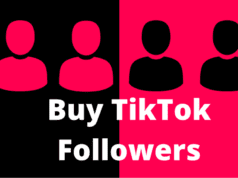
A call to action (CTA) is one of the most critical parts of any marketing message, whether it’s delivered by email, direct mail, on your website, Facebook page or any other way. A call to action should spur the customer or prospect to take the next step (call, click, stop by, download, “like,” tell a friend, etc).
But many businesses create ineffective calls to action – or worse, none at all. “Call us” or “Click here” are CTA wimps. They offer no information or customer motivation. Call who, why? What happens if I click? What’s in it for me?
A strong CTA makes it clear what action the customer is expected to take, and why. Your approach depends on the action you want to motivate. For example, if the goal is to spur a purchase, and you’ve already communicated benefits, a simple “Buy Now!” might be all you need. Here are nine tips for creating strong calls to action:
- Set the table first: A call to action works best when customers are properly prepped. Start by identifying the problem (the pain), and explaining why your product or service solves it. The benefits you offer can become part of your call to action.
- Make it stand out. In a letter or text email, for example, the CTA can be in larger type, color or bold. On a website or blog it can be designed into a colorful button.
- Offer incentives: Consider a sweetener, such as a discount or free gift as a reward for heeding your call to action. For example, instead of saying merely “Join our mailing list” your CTA could be “Join our mailing list and receive a 15% off coupon.”
- Avoid scary terms. Instead of asking people to “Register” or “Subscribe,” (both can be scary), try friendlier terms such as “Receive updates” or “Stay connected.” Make it about them, not you.
- Keep it clear and simple: Avoid surrounding your call to action with too many choices. Keep the mental effort required by customers to a minimum. For example, presenting three action choices such as “View Demo,” “Get more Information” and “Buy Now” all in the same place will likely reduce response.
- Place your CTA early and high: Small businesses typically place their call to action at the bottom of a page. The best place, however, is high on the page, and in a central place where the eye can easily see it, not off to the side.
- Use links liberally: Always link logos and product photos to your desired landing page or shopping cart. And don’t forget to label your photos with descriptive “ALT” tags. This stands for “alternative text” which will appear in someone’s browser or email if the image is not available.
- Be strategic: When creating your CTAs, don’t think in terms of a single offer or campaign. Try to create calls to action that can be part of your overall marketing plan. That way, the same ones can be used in a variety of circumstances.
- Follow through: Having a great CTA still isn’t enough. You also have to consider what happens if the customer or prospect does what you’ve asked. It is vital to deliver the proper response quickly – an order confirmation, thank you note, email, or other action on your part that keeps the customer moving down the purchase, or repeat-purchase path.
Article courtesy of SCORE.








